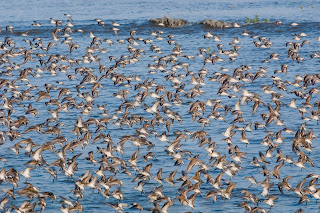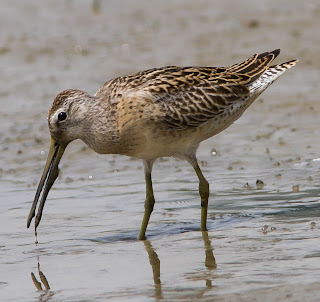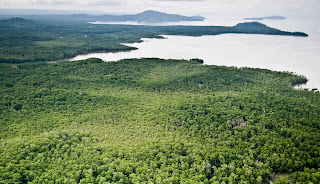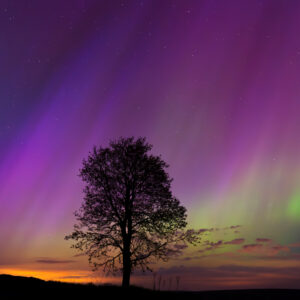Will Canada’s Shorebirds Have a Place to Go in Panama?
[two_third]
For the past week, delegates have been gathering in the ornate Palace of Parliament in Bucharest, Romania for the 11th conference of Parties to the Ramsar Convention, where scientists, policy wonks, conservationists and government officials are debating the future of wetlands around the world.
Despite Panama Bay’s crucial importance to the birds and people of Panama, the Panama Bay wetlands have come under threat. In May the Panama Supreme Court suspended the protected area designation following a legal challenge by supporters of resort development on the mangrove forests closest to Panama City. At the same time, the Governing Body of the Autoridad de los Recursos Acuáticos de Panamá (Panama’s Aquatic Resources Authority) reduced the fees for the use of mangroves, and the fines for illegal mangrove clearance. These changes leave the Panama Bay wetlands, and other mangrove wetlands in Panama, highly vulnerable. Developers are poised to start filling in mangroves and dredging to create marinas, golf courses and housing.
- The Panama Bay wetlands provide food and shelter for juvenile stages of commercially valuable fish and shrimp that contribute shrimp that contribute $86 million a year to Panama’s economy. Sediments in these mangroves trap pesticides and other damaging chemicals from agricultural and urban runoff and keep them from entering the marine food chain.
- Panama Bay’s mangroves and low-lying landward areas significantly decrease the risk of flooding and the impacts of severe weather on Panama’s coastal zone by providing a sink for storm waters. Furthermore, mangrove ecosystems worldwide are also now known to be vital carbon sequestration areas, more important per hectare than terrestrial ecosystems.
- There are 27 species of fiddler crabs in the Panama Bay wetlands, more than any other place in the world. Globally threatened wildlife includes American Crocodile, Loggerhead Sea Turtle, Tapir and Geoffroy’s Spider Monkey, as well as several mangrove tree species.
- Between 1 and 2 million shorebirds of more than 30 species use the bay during their annual southward migration. For many migratory shorebird species that breed in the Canadian Arctic, Subarctic or Boreal Forest, significant percentages of the global population depend on the bay, including Western Sandpiper (31% of the global population, most of them females), Semipalmated Plover (20%) and Semipalmated Sandpiper (8%). The bay is key to maintaining the Pacific coast population of other species, including Black-bellied Plover(6%), Short-billed Dowitcher (8%), Whimbrel (22%) and Willet (12%).
[/two_third] [one_third_last]
[/one_third_last]






